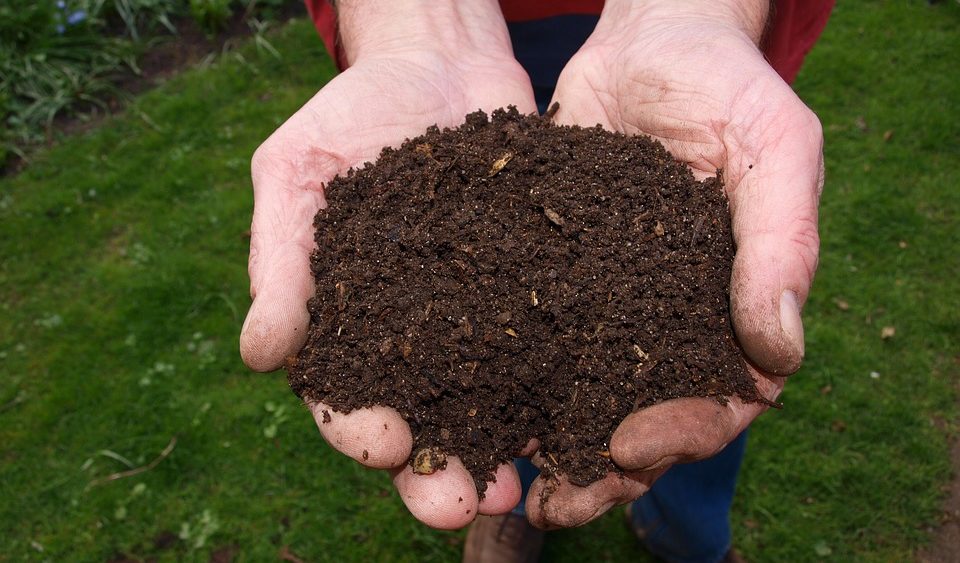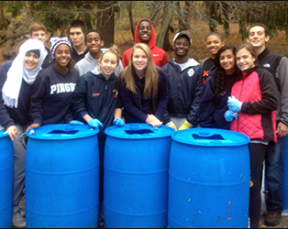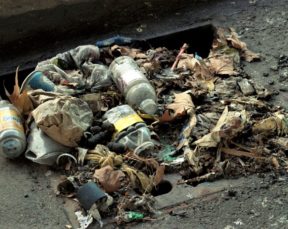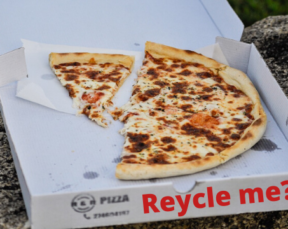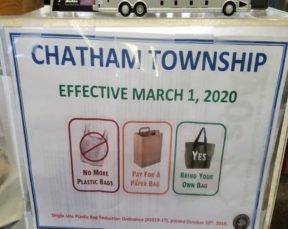By Val Thorpe – GSWA Director of Communications and Membership
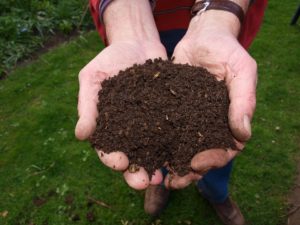

Whether you’ve been composting for years or are looking to start, keep in mind it’s a four-season activity. When maintained properly, you will be rewarded with organic material that is rich in nutrients perfect for use with indoor plants and in your garden. There are a variety of ways to compost and many composters available on the market. Do your research and determine what’s best for you. HINT: If you choose a compost pile or bin, look for a spot that is not in full sun or underneath large trees. Avoid putting it against shed or a fence, since you want good air circulation. And in the interest of being a good neighbor, try to place it somewhere behind-the-scenes.
All composting requires three basic ingredients:
• Browns (carbon) – Think dry and dead or dying material: dead leaves, dried grass clippings (drying them out helps cut down on odor), dead branches (stripped of leaves), and twigs, wood chips, saw dust, straw, black and white shredded newspaper, cardboard, corn stalks. Always start a new compost pile with a fluffy layer of browns on the bottom (at least 6 to 8 inches deep) to absorb moisture from the pile and keep things well-aerated, thus avoiding cesspool conditions. When in doubt, add more carbon. The worst that can happen is it takes longer to decompose. Extra leaves, straw, and grass clippings, especially when used on the outside of the pile, reduce odor and improve aesthetics.
• Greens (nitrogen) – Think materials with moisture: fresh, untreated grass clippings (don’t use clippings from a lawn that’s been treated with chemicals or the compost could kill next year’s plants), fresh leaves, kitchen scraps (crushed eggshells, old bread, vegetable and fruit scraps, coffee grounds) and animal manure (not from your pets). Add in thin layers, not little piles, so that all the material is in contact with carbon-rich browns.
• Water – the right amount of water is important for compost development. Water provides moisture to help break down the organic matter. The perfect compost pile is like a rung-out sponge – moist, but not soggy.
What’s the correct ratio of browns to greens?
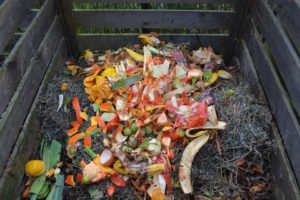

A working compost pile will actually heat up (cook). If you find that your compost pile is not heating up, you may need to add more green material to the compost. NOTE: a properly managed compost pile will not attract pests or rodents and will not smell bad. If your compost pile starts to smell, you may need to add more brown materials. Clear as mud? Don’t stress it too much. First learn the basics. Then, through trial and error, you will strike the right balance.
Composting by Seasons
Autumn – Leaves are the perfect key ingredient. Composting mimics leaves lifecycle, breaking them down creating rich soil. Also, when you compost your leaves, you are being kind to the environment by not bagging them up to be hauled away. This means less single-use plastic clogging up the environment where the leaves take much longer to break down.
Let’s get started…
• Browns – Start with a big layer of leaves. It’s best to shred them first if possible. This keeps them from sticking together, matting down and rotting. Some great tools for shredding are a chipper/shredder, a leaf blower with a reverse ‘vacuum’ setting, a leaf shredder that fits on top of trash cans, or bagging lawn mowers. HINT: double shredding your leaves will allow them to compost even quicker. A little extra upfront work goes a long way.
Layer your leaves with dead and dying flowers and summer plants – just make sure they are not diseased. You can also add your other brown materials (refer to the list above.) This helps move the process along and keeps everything from clumping together. HINT: Leaves are carbon-rich and can provide your compost a little boost throughout the year. So be sure to set some aside, keep them dry, and integrate into your pile as needed throughout the year, especially in those cold winter months.
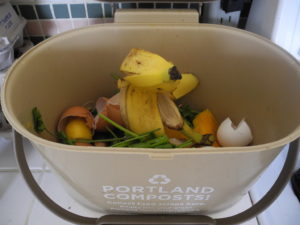

• Water – Once you’ve finished combining your browns and greens, determine the moisture level. As mentioned earlier, it should be moist, not soggy. Too much water can smother the pile and make it smelly and slimy. Too little water will kill the bacteria and it won’t compost. HINT: the more green material you put in, the less water you’ll need to add.
Now your composting has begun! What’s next?
It’s important to aerate/turn your composting materials periodically to mix everything together and create some air space. A good rule of thumb is to turn a compost tumbler every three to four days, and a compost pile every three to seven days. As your compost matures, you can turn it over less frequently.
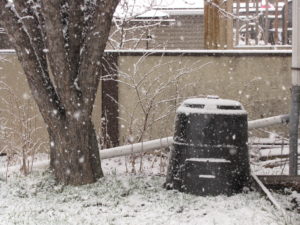

Winter – As the temperatures drop, your compost pile may slow down and materials won’t break down as readily. If it drops below freezing outside for several days or even weeks, composting may come to a complete stop. At this point, microorganisms cannot start creating compost again until the temperatures rise. If this happens you should continue adding to your compost bin but keep an eye on it. If it starts to get full, you may need to stop adding scraps until composting begins again. Use your best judgement based on what you are observing.
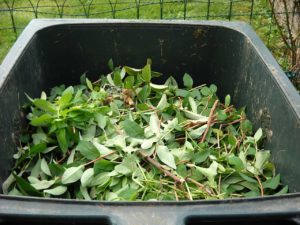

Summer – If you already have an established compost pile, summer is a good time to focus on maintenance. The hot summer temperatures can give your pile an extra cooking boost. Just remember to keep your pile a little moist during the dry times, or the process will start to slow down. A bonus to summer composting, there’s an abundance of free grass clippings. Remember, grass clippings can be considered green or brown, depending on if they are wet or dry. Using your grass clippings versus sending them to a landfill is yet another way to continue being environmentally friendly. And of course, summer is a great time to use your beautiful compost in your garden. As temperatures rise and there’s less rain, compost is a great additive to the soil to help plants thrive. Afterall, isn’t this why you decided to compost?
Adding Materials
When adding to your compost, don’t squash everything down to make more space. That will eliminate the necessary air that the microbes need to compost. It can also cause it to smell bad.
Shred, dice or somehow minimize the size of your scraps. This will help the bacteria convert everything into compost more quickly.
Continue to be mindful of the brown and green ratio. When you add kitchen scraps, throw some leaves or grass clippings on top of it. This will help keep things balanced, reduce smells and make your compost bin less attractive to critters who may be looking for a nice bed and breakfast.
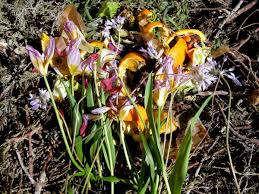

Speaking of Unwanted Critters…
Taking proper precautions will help avoid uninvited visitors like rodents and pests. Stay on top of your balance of browns, greens and water. Additionally, following are some helpful hints to both prevent critters from getting into your compost pile and for getting them to leave if they’ve already found it.
Bury Food Scraps to Keep Critters Out: Compost piles they are easy sources of food. Never add meat or dairy to a pile because that’s a big draw for rodents. But sometimes, even your potato peels might interest them. When you add food scraps to the pile, dig a little hole and drop them inside, then cover it back up again. Another option is to simply add the food scraps on top and then add a layer (about 2-inches) of grass clippings or leaves from your reserve.
Check the Moisture Level: Your compost pile can dry out at any point, especially during hot, dry spells. If this happens, 1) it’s inefficient and, 2) it becomes a rodent haven because it’s a dry, warm, and insulated place to sleep. There’s even food for a midnight snack. So, check to assure it has proper moisture by turning the pile regularly and giving it a bit of water if needed. By assuring your compost pile is always moist throughout (not wet) rodents will not be interested in making it their home. REMEMBER: the entire pile should have the same moisture level as a wrung-out sponge.
Stop Adding Kitchen Scraps: If rodents are a real problem, and you don’t want to have to think about it, completely stop adding food waste to your compost pile and switch to other greens.
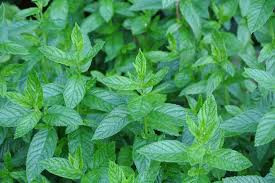

Try “Bokashi” to Make Kitchen Scraps Unappealing: According to Wikipedia, “Bokashi is a process that converts food waste and similar organic matter into a soil amendment which adds nutrients and improves soil texture.” This process is known to make the end result completely unappealing to pests when you add it to your compost pile. There’s a lot of information on Bokashi out there, check it out if you’re interested.
What Not to Compost
• Black walnut tree leaves or twigs: releases substances that might be harmful to plants
• Coal or charcoal ash: may contain substances harmful to plants
• Dairy products (butter, milk, sour cream, yogurt, and eggs): create odor problems and attract pests like rodents and flies
• Diseased or insect-ridden plants: diseases or insects might survive and be transferred back to your plants and garden
• Fats, grease, lard, or oils: create odor problems and attract pests such as rodents and flies
• Meat or fish bones and scraps: create odor problems and attract pests such as rodents and flies
• Pet wastes (dog or cat feces, soiled cat litter): might contain parasites, bacteria, germs, pathogens, and viruses harmful to humans
• Yard trimmings treated with chemical pesticides: might kill beneficial composting organisms
Some say composting is like turning garbage into gold. Maybe it’s even better than gold when you consider that composting keeps all the materials you use in your compost pile out of landfills where they would take up space and release methane, a potent greenhouse gas. Adding compost to your plants and garden will provide you with much healthier plants and a heartier garden crop. And finally, composting is good for the mind, body, and soul. It’s a great excuse to step outside throughout all four seasons to breathe in fresh air and experience nature.
So, go on, get outside and get your hands a little dirty!
